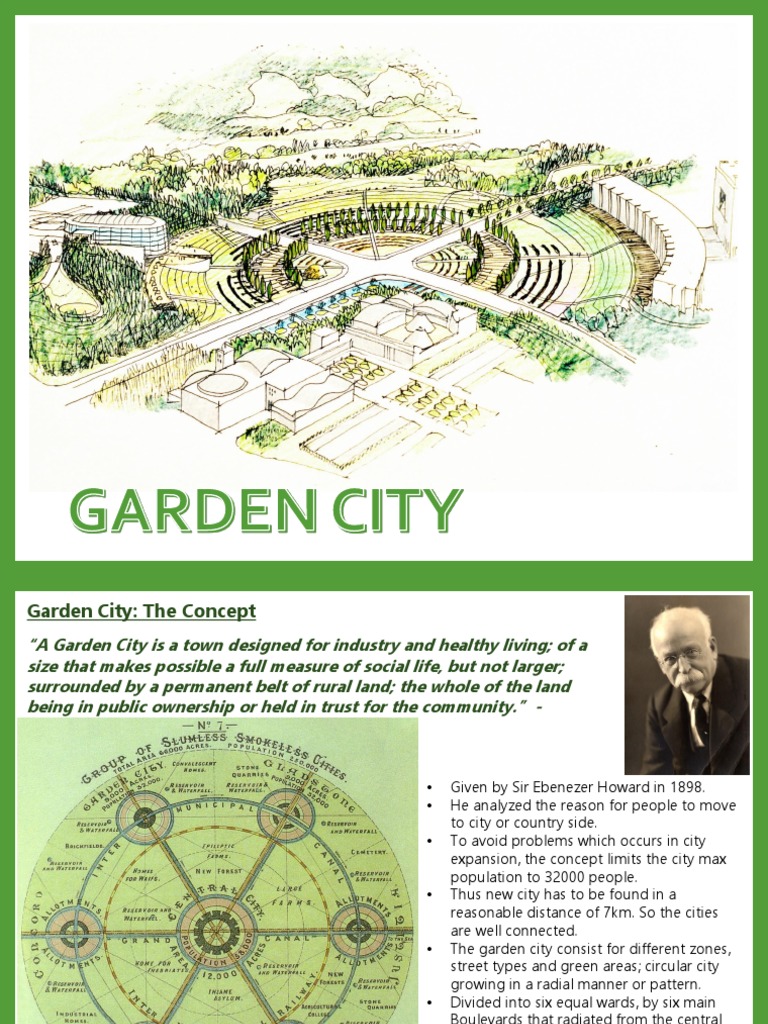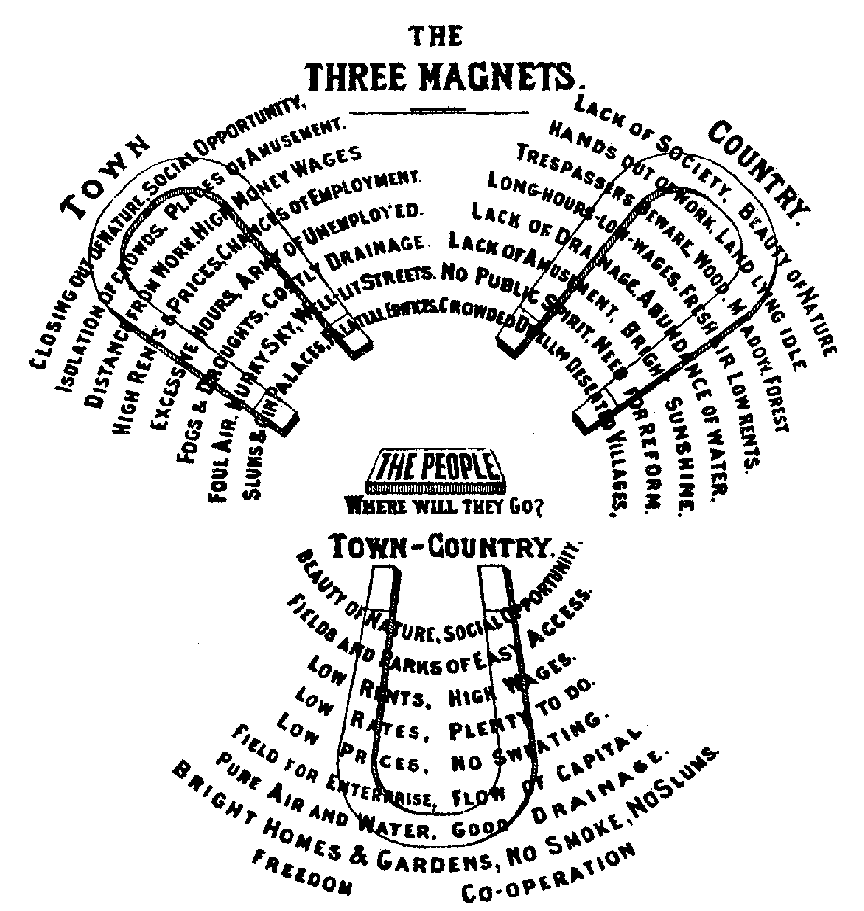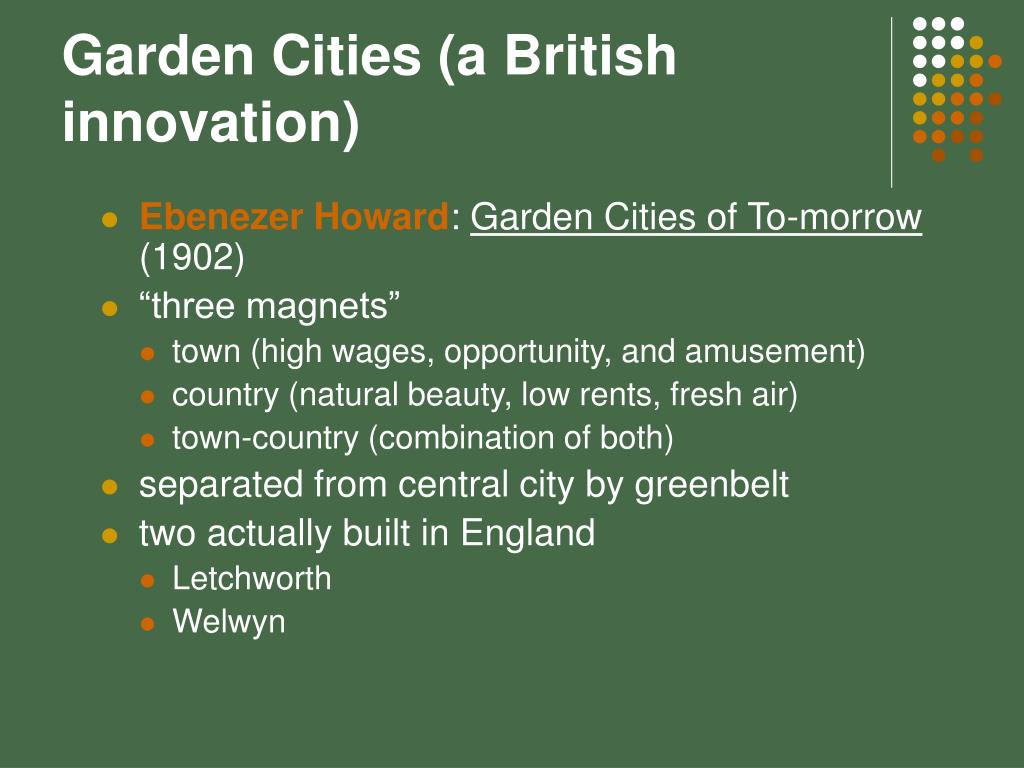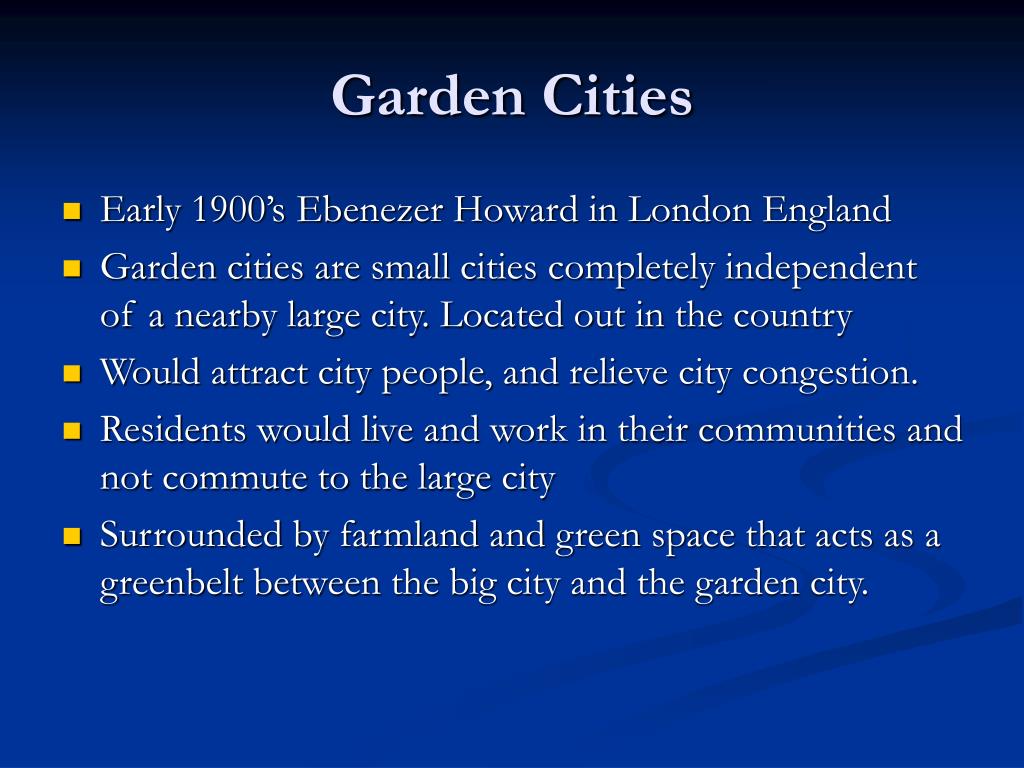Garden City By Ebenezer Howard Slideshare

The garden city movement is a method of urban planning that was initiated in 1898 by Sir Ebenezer Howard in the United Kingdom.
Garden city by ebenezer howard slideshare. A Peaceful Path to Real Reform 1898 the description of a utopian city in which people live harmoniously together with nature. Garden Cities of Tommorow by Sir Ebenezer Howard 1. Garden city 1.
Ebenezer Howards book was reissued in 1902 as The Garden Cities of To-morrow and this reissue was successful providing him with the support he required to bring his vision to life. According to the definition given by Garden Cities. Reviewed by Luke Butcher.
Pretty much excoriated by Jane Jacobs in the 1960s as a decentralist utopian against real cities he still has many defenders today. The whole of the land being in public. The publication resulted within the founding on the backyard metropolis motion that realized many Garden Towns.
Garden cities were intended to be planned self-contained communities surrounded by greenbelts containing proportionate areas of residences industry and agriculture. His main aim was to create a theoretical concept that would try to correct or reduce problems that were now. Garden city by ebenezer howard slideshare.
The garden city is a place that acts as a community where people from different walks of life can live and work in harmony. A peaceful path to real reform 1898 later republished as garden cities of tomorrow 1902. At the time overcrowding and deterioration of cities was a big issue and the garden city concept created an alternative to working on farms or in.
HISTORY Concept of Garden City was introduced by Ebenezer Howard London1898 in his small remarkable book To-morrow later re-published as Garden cities of To-morrow. Sir Ebenezer Howard is known for his Publication Backyard Towns of To-morrow 1898 the description of the utopian city in which people Are living harmoniously along with mother nature. After schooling he took on a number of clerical posts.



















